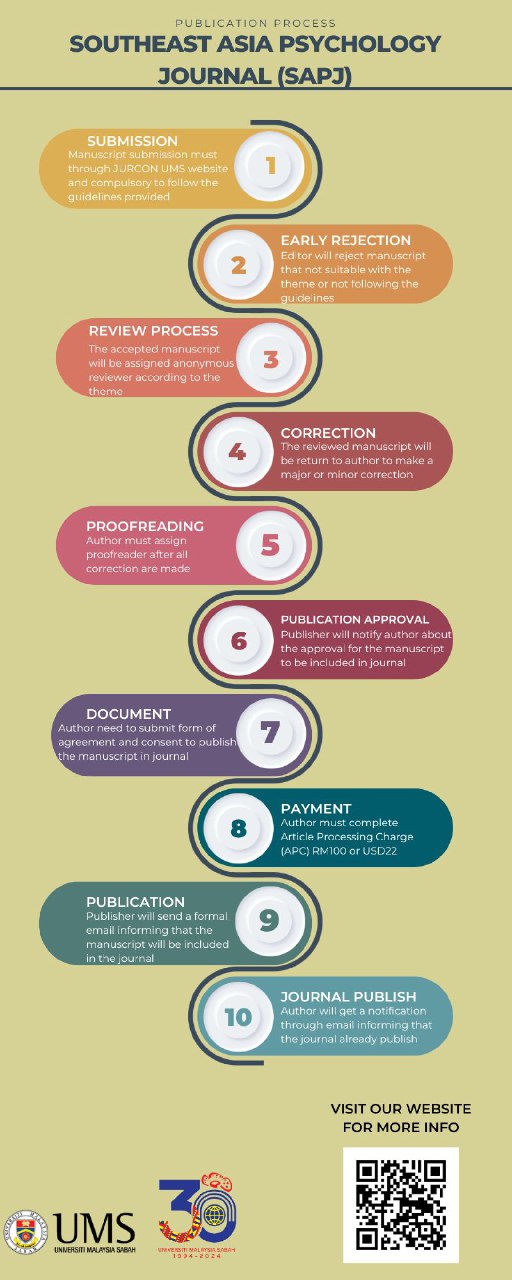EMPOWERING CHILDREN WITH AUTISM TO SUCCESS: WITHIN APPROPRIATE ECOSYSTEM
DOI:
https://doi.org/10.51200/sapj.v8i1.5126Keywords:
Empowering, Ecosystem, ASDAbstract
Early detection of developmental delays in children coupled with appropriate intervention is crucial to help children develop to their fullest potential. Over the next few years, Ministry of Social and Family Development (MSF) will work with the Ministry of Health (MOH) to form a network of touch points across the health and preschool sectors. This would include doctors at the
hospitals, polyclinics and family medicine practitioners in developmental screening, and pre-school teachers in early detection of children with developmental needs, so that they can be supported through timely intervention. Children with Autism Spectrum Disorder (ASD) have a unique profiling personality in terms of diverse intelligence, natural learning patterns and styles, the most effective natural learning method and the thinking mindset. The journey begins when a child has been diagnosed with Autism, be it verbal or non-verbal. As days passed, some parents may wonder what they could do for the sake of them and their child. This paper draws attention to the strategies of how we can empower the child with ASD to gain success in life within an appropriate ecosystem. The ecosystem supports children with disabilities (ASD) and their families, so as to improve their quality of life. Existing initiatives will be enhanced to provide more holistic help and a smoother transition for children with ASD at different stages of their lives.
References
Ban Jun Sin, Young-Hwan Yeo, & Mohd. Nasir Hashim. (2010). Dermatoglyphics: A study of the Fingerprint Patterns and ATD angle of Piano Students in University of Malaya, Kuala Lumpur.
Barbara, S. (2016). Everyday Games for Sensory Processing Disorder: 100 Playful Activities to Empower Children with Sensory Differences. Althea Press.
Barry, M., Prizant, A., M. Wetherby, E., Rubin, M. S., Amy, C., & Laurent, P. J. R. (2005). The Secrets Model: A Comprehensive Educational Approach for Children with Autism Spectrum Disorders. Brookes Publishing; 1st edition. Francis Galton, Biology (2004). Finger Prints: The Classic 1892 Treatise (Dover Books on Biology). Dover Publications.
Gabriel, M. G. (2016). Discover the Blueprint of Your Fingerprints. CreateSpace Independent Publishing Platform.
Pritchard, P. (2013). Ways of Learning: Learning theories and learning styles in the classroom. David Fulton Books 3rd Edition.
Richard, R. & Stephen, R. (1998). Cognitive Styles and Learning Strategies: Understanding Style Differences in Learning and Behavior. David Fulton Publishers.
Ruth, A. & Barry, G. (2011). The Ziggurat Model A Framework for Designing Comprehensive Interventions for Individuals with High Functioning Autism and Asperger Syndrome Updated and Expanded Edition. AAPC Publishing; 2nd edition.
Mark, L. S. (2008). Verbal Behavior Milestones Assessment and Placement Program, Full Set. AVB Press.
Mark L. S. & James W. P. (2010). Teaching Language to Children With Autism or Other Developmental Disabilities. AVB Press.
Barry, M. P. (2016). Uniquely Human: A Different Way of Seeing Autism. Simon & Schuster; Reprint edition.








